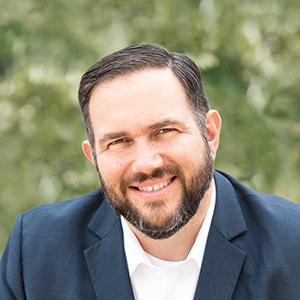 Jun 26, 2025
Persona
Jun 26, 2025
Persona
Higher education is navigating a complex landscape marked by shrinking budgets, intensified enrollment pressures, and a shifting political climate. Institutions are tasked with achieving more with fewer resources, making strategic Student Search more crucial than ever. It’s time to rethink traditional approaches and embrace adaptable, resource-efficient strategies.
The Current Reality: Facing Financial and Enrollment Challenges
Institutions are facing a multitude of interconnected challenges:
- Budget Constraints: Reduced state funding and economic uncertainties are forcing institutions to operate with tighter budgets.
- Enrollment Declines: The projected “enrollment cliff,” coupled with evolving student demographics and values, complicates attracting and retaining students.
- Increased Competition: Institutions expanding their recruitment territories are competing for a diminishing pool of potential students.
- Shifting Student Expectations: Gen Z and Gen Alpha prioritize authenticity, personalization, and clear value propositions, necessitating sophisticated outreach.
- Declining Institutional Trust: Growing public skepticism towards educational institutions requires rebuilding trust through transparent engagement.
In this climate, traditional Student Search methods are insufficient. Institutions must prioritize strategic, resource-conscious approaches.
Six Strategies for Resource Optimization and Enrollment Growth
To address these challenges, institutions should consider the following strategies:
1. Data-Driven Market Research and Lead Prioritization
- Instead of broad, resource-intensive outreach, prioritize targeted market research to identify high-potential segments.
- Employ lead scoring models to concentrate resources on students with the highest likelihood of conversion, optimizing yield.
2. Personalized Communication Through Student Profiling
- Utilize psychographic and demographic student profiles to create highly personalized student communication.
- This approach enhances engagement and conversion rates, ensuring meaningful interactions.
3. Agile Campaign Management and Optimization
- Leverage data from CRMs, digital platforms, and data platforms to continuously monitor and refine campaigns.
- This agile method enables real-time adjustments, ensuring efficient resource allocation.
4. Predictive Modeling for Resource Allocation
- Use predictive models to identify students with the highest propensity to apply, prioritizing outreach efforts.
- This data-driven approach focuses resources on high-potential students, maximizing yield.
5. Strategic Financial Aid Optimization
- Recognize financial aid as a crucial yield tool and develop strategies aligned with enrollment goals.
- Optimizing financial aid offers can attract and retain qualified students while managing budgets responsibly.
6. Data-Informed Decision-Making and Transparency
- Ensure access to comprehensive reporting and data analysis for informed decision-making.
- This transparent approach supports optimized Student Search efforts and demonstrates return on investment.
Adapting for Sustainable Enrollment
Though today’s higher education environment is a challenging one—smart, adaptable, and resource-efficient strategies can help. Putting the individuality of every student front and center is key. Data-driven models adapt not just to the situation but to the individual.
Partnering with experienced organizations can provide access to advanced data analytics, personalized communication strategies, and expertise in optimizing financial aid, among other things. These partnerships can help institutions navigate budget constraints and enrollment pressures while achieving sustainable growth.
Ready to Take Your Enrollment Strategy Beyond Student Search?
Join Carnegie’s enrollment and student success experts for the upcoming live webinar, Connecting Recruitment & Student Success for Lifelong Impact. We’ll explore how to connect your recruitment efforts with a broader student success strategy, ensuring that personalized outreach, data insights, and support systems work together to drive long-term outcomes.
